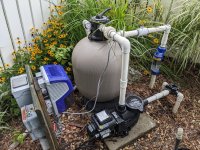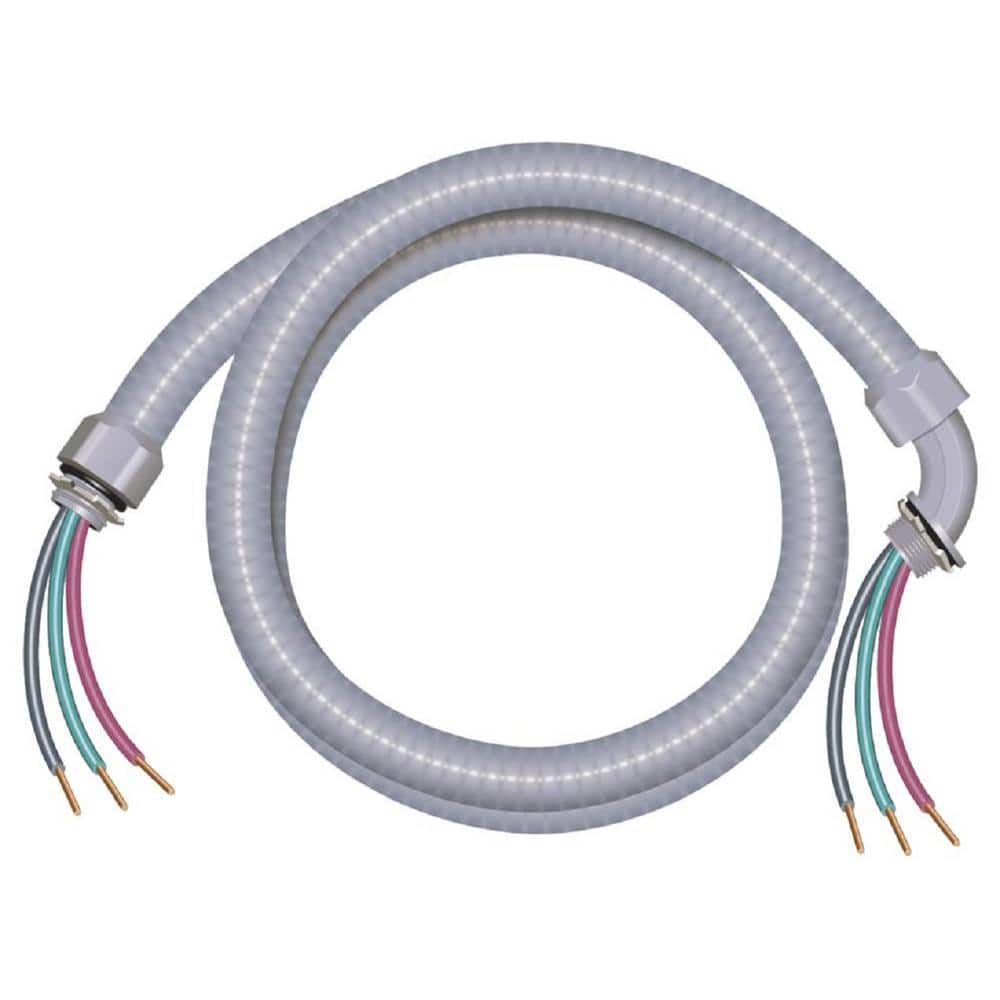- Aug 9, 2024
- 3
- Pool Size
- 15000
- Surface
- Fiberglass
- Chlorine
- Salt Water Generator
- SWG Type
- CircuPool RJ-30 Plus
Hi all,
Looking to get some advice on how to wire a new SWG. Long story short, my old single speed pump started leaking a few weeks ago and that's when I decided to update to a variable speed pump with a SWG system. I went with the 1.5 HP Circupool Smartflo VSP and the Circupool RJ 30+ SWG.
The pool guys I use to open and close the pool came by to install the systems but I was unfortunately not home when they finished. I came home to find that the SWG was on but not operational. What they ended up doing was plug the SWG to a 120 V outlet and connect the VSP to the intermatic timer. I suspect that they did not adjust the jumpers from the factory setting of 240 V to 120 V. Also, they said that having the SWG on a plug is more convenient for taking the salt system inside to store during the winter but I keep seeing that it's best to have the pump and the SWG wired together so the SWG doesn't turn on when the pump is off. The pump has a timer of its own and I am planning on running the pump 10 hours a day. I hesitate to ask them to come out to fix it so I'm thinking of tackling this on my own.
I see two possible approaches:
1. Keep the current set up and adjust the jumpers on the SWG to 120 V. Plug the SWG into a separate stake timer that I use for Christmas lights in the winter. I don't think load will be an issue since the stake timer is rated for 15 A. I'll run the pump from 11AM-9PM and the SWG from 12PM-8PM to provide some buffer . This seems like the easier approach.
2. Keep the SWG on 240 V and wire it to the intermatic timer to control the SWG. I could then either keep the pump on the load side so that the timer controls the pump too or switch the connection to the line side so that the pump timer controls the pump. This seems like the more correct approach but I don't consider myself very handy so I'm not sure if this is something that would be simple to do.
For reference, I've attached pictures of my set up. Any help is greatly appreciated.
Thanks!
Looking to get some advice on how to wire a new SWG. Long story short, my old single speed pump started leaking a few weeks ago and that's when I decided to update to a variable speed pump with a SWG system. I went with the 1.5 HP Circupool Smartflo VSP and the Circupool RJ 30+ SWG.
The pool guys I use to open and close the pool came by to install the systems but I was unfortunately not home when they finished. I came home to find that the SWG was on but not operational. What they ended up doing was plug the SWG to a 120 V outlet and connect the VSP to the intermatic timer. I suspect that they did not adjust the jumpers from the factory setting of 240 V to 120 V. Also, they said that having the SWG on a plug is more convenient for taking the salt system inside to store during the winter but I keep seeing that it's best to have the pump and the SWG wired together so the SWG doesn't turn on when the pump is off. The pump has a timer of its own and I am planning on running the pump 10 hours a day. I hesitate to ask them to come out to fix it so I'm thinking of tackling this on my own.
I see two possible approaches:
1. Keep the current set up and adjust the jumpers on the SWG to 120 V. Plug the SWG into a separate stake timer that I use for Christmas lights in the winter. I don't think load will be an issue since the stake timer is rated for 15 A. I'll run the pump from 11AM-9PM and the SWG from 12PM-8PM to provide some buffer . This seems like the easier approach.
2. Keep the SWG on 240 V and wire it to the intermatic timer to control the SWG. I could then either keep the pump on the load side so that the timer controls the pump too or switch the connection to the line side so that the pump timer controls the pump. This seems like the more correct approach but I don't consider myself very handy so I'm not sure if this is something that would be simple to do.
For reference, I've attached pictures of my set up. Any help is greatly appreciated.
Thanks!






